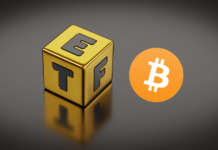A user can do a million transactions for a dollar worth of Lumens in the Stellar network. That is practically 0 fee, and no high cap Layer-1 can compete with that gas.
What is Stellar?
Stellar is an open-source network focused on connecting people and financial institutions worldwide. Stellar is optimized for payments and the issuance of digital assets like CBDCs. It also serves as a platform to create digital representations of a wide range of assets, be it U.S. dollars, Argentine pesos, Bitcoin, real estate, or anything.
Blockchain tech is doing some amazing things. Case in point: Stellar Aid Assist. We're excited to share more about how Stellar is providing real-world solutions to those in need at the World Economic Forum. Follow @Stellarorg for live updates at Davos. https://t.co/lYbOtCp2Z3
— Denelle Dixon (@DenelleDixon) January 12, 2023
In other words, Stellar intends to be the one-stop interoperable solution for financial systems. Since it is a public network, nobody specifically owns it. Stellar is much faster, cheaper, and greener than most blockchain-based systems.
Stellar Lumens and its Relevance
$XLM is the native token of the network. Every account must hold a small amount of $XLM all the time.
So, the Stellar ledger system is open to everyone and is easy to use. It does not require a particular amount of gas, nor it filters its users via barriers. In addition to the cheap and fast transactions, the ease of use serves as the best selling point for Stellar.
But it might make the network vulnerable to becoming an arbitrary database system. It could also defeat the chief goal or purpose behind Stellar to be a fast and efficient payment system. Thus, to prevent this scenario, some minimum requirements are in place. So, Stellar introduced a system of minimum balance and a minute transaction fee. One might wonder, almost all blockchains require gas to complete transactions. Let’s look at the status and pricing of gas in Stellar.
Stellar Gas Fee
At the time of writing this article, the minimum balance required to maintain a stellar account is 1 lumen, and the minimum per-transaction fee is 0.00001 lumen. Lumen is currently trading at $0.087 with a market cap of $2.2 Billion. It is available on almost every top exchange, such as Coinbase, Binance, etc. You can find a comprehensive list here on CoinMarketCap.
Back to gas pricing, one can do a million transactions for a dollar worth of Lumens. That is practically 0 fee, and no high cap Layer-1 can compete with that gas. However, these requirements are strong enough to keep large-scale spamming behavior at bay. Yet small enough to make the network widely accessible.
1/ Learn how to farm liquidity with almost no fees!
Try out @stellarxhq based on #XLM
The Stellar network is instant & fees are under 1 cent. Similar to Uniswap with no gas headaches.
I made $500 in passive income by compounding my rewards in a bear market! Not bad.
Next 👇 pic.twitter.com/tATAJMVUDy
— Duo Nine | discord.gg/ycc (@DU09BTC) June 5, 2022
At the same time, let’s compare and contrast the problem Stellar is trying to solve. If we use any particular national currency, say American dollars, the network cost will remain fixed for Americans. However, it will float for everyone else.
The users can not mine lumen tokens. Instead, the Stellar team created 100 billion tokens. The team had decided to keep 1% inflation for the first five years from the launch.
But, in October 2019, a community vote took place and stopped the inflation. It reduced the total supply to 50 billion tokens. Currently, around 26 billion lumens are in circulation, and the Fully Diluted Valuation is $4.3 billion. The Stellar Development Foundation holds the remaining 24 billion tokens to promote the development and growth of the ecosystem.
How The Stellar Network Works?
Stellar keeps track of the ownership of assets using an immutable ledger. It does not have a central authority, so a bad actor can not stop or alter the network. Also, the ledger updates and verifies every five seconds.
All this is possible by a unique algorithm called the Stellar Consensus Protocol(SCP). The consensus mechanism uses the Proof-of-Agreement method, which is different from the Proof-of-Work consensus used by cryptocurrencies like bitcoin or the Proof-of-Stake used by Ethereum, Cardano, etc.
So, Stellar ledger keeps track of two crucial pieces of information:
- The account balance
- The operation a user wants to perform with this balance.
Both the balance and operation details of all wallets get broadcasted to network participants and are resolved every five seconds. It is possible because of systems called nodes that run the core of the network. Each node in the network verifies the correct balances of each account or wallet. Transaction details are published on the ledger upon reaching a consensus.
Today, the UNHCR (@Refugees) and the Stellar Development Foundation, announced the launch of a pilot first-of-its-kind blockchain payment solution for digital cash distribution to internally displaced persons and other war-affected people in Ukraine.https://t.co/rdh5OpxQrz
— Stellar (@StellarOrg) December 15, 2022
Every single token on the network is exchangeable with each other. The buyers and sellers are connected via the protocol that runs the network. No intermediary arranges the settlement or acts as an intermediate custodian of the tokens. Also, Stellar allows users to send one currency and receive another at the other end. For example, if a user from Kenya has to pay someone from the USA, he can send shilling tokens, and his counterpart in the U.S. will receive U.S. dollar tokens. The method is path payment and will help empower international transactions.
Projects and Partnerships
The stellar network has many projects and partnerships. Some notable projects are
- Airhug – donations using $XLM
- 6SR – options trading
- Anchorage – institutional custodian
- Anclap – Latin America-based payment solution
- Bancambios Pay – FIAT onramp
Stellar has partnerships with industry leaders such as Circle, Binance, HTC, Blockcard, etc.
⬆️ For more cryptocurrency news, check out the Altcoin Buzz YouTube channel.
⬆️ Our popular Altcoin Buzz Access group generates tons of alpha for our subscribers. And for a limited time, it’s Free. Click the link and join the conversation today.



























